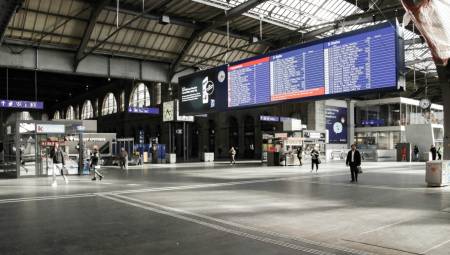 Mexico. In 2020 and 2021, e-commerce and distribution chains grew logarithmically. And as a cause-consequence that people could not go out to the streets and to the shops. Digital signage (video and multimedia communication for public spaces) had no audiences. There were no people to show promotions, ads, notifications and more.
Mexico. In 2020 and 2021, e-commerce and distribution chains grew logarithmically. And as a cause-consequence that people could not go out to the streets and to the shops. Digital signage (video and multimedia communication for public spaces) had no audiences. There were no people to show promotions, ads, notifications and more.
Gradually, some people had the urgent need to buy their food and everyday objects.
After the first negative impression for the world of digital signage, creativity came to the fore: special content was created to mitigate the spread of the virus, informing customers of the capacity of the place in real time, emphasis was placed on strict hygiene and social distancing measures, government communications and even some special indications on site (restricted purchase of toilet paper or antibacterial gel). One of the great advantages was the drastic decrease (and waste) in posters, cardboard, adhesive vinyls and other traditional stationery.
Then we found solutions that applied integral technology such as sanitary customs that made use of small contactless screens that offered bi-directional, interactive, short and precise communication, in addition to causing the rebirth of the "almost forgotten" QR codes.
The industry began to give new content in response to the pandemic. And it is that the Digital Signage (or digital signage in our language) is no longer a static device that loops the content or even an independent screen. It is now a contextual and audience-aware tool that businesses can use to reach customers at their level.
Meticulous Research estimates that the digital signage market will grow at a CAGR of 4.3% from 2020 to 2027 to reach $19.44 billion by 2027. Recovery scenarios depend heavily on the ability of governments to effectively cope with the virus and vaccinate the population.
The digital signage market will grow at a rate of 4.3% between 2020 and 2027 to reach $19.44 billion by 2027.
How will they achieve this impetuous growth?
Here are 5 digital signage trends in 2021
1. Physical resurgence. We are already experiencing the opening of the global economy, still limited and with certain restrictions, but the light is already seen at the end of the tunnel. It is expected that an invasion of signage screens for commercial and informative purposes will come in malls, parks, boutiques, bars, restaurants and even in public and corporate buildings. We will also see an increase in DS for payment of services (Pay Point Kiosk). While it is true that e-commerce is already unstoppable, physical stores will resurface. People really want to do "live" shopping.
2. Contactless. Touch screens will see their use drastically reduced, people have become very cautious to touch objects that have previously passed through other hands. We'll see digital signage displays that will respond to voice controls, gestures, and facial recognition. It is possible to limit in certain environments the touch panels will continue to be present (in certain fast food aisles or those businesses that do not require human intervention, such as vending machines, etc.).
3. For public health and hygiene. Digital signage will be deployed in all sizes and configurations in public spaces to generate perception of concern and trust in bus terminals, train stations, airports, but also in public and private clinics, entrances to government buildings, all types of workplaces, access to shopping centers, museums, schools and more. The potential looks encouraging. It is a positive role that digital signage technology plays in the fight against the coronavirus and the more companies and organizations adopt it, the better.
4. Personalized content. In 2021, companies will turn to more personalized and relevant content that can instantly pique the interest of a potential consumer. A specialization is being formed in professionals highly specialized in multimedia content, interactive focused exclusively on Digital Signage.
5. Digital signage shall be for outdoor use. Communication in open spaces will have a boom, this as a result of the new appropriation of places that were not previously used for social coexistence activities: parks adjacent to buildings, small open terraces of cultural centers, green roofs ... People want to have a coffee, but also to exercise, meditate or study and work in places where the wind is running... Digital signage will have to take advantage of this trend with technologies that withstand the elements.
Text published by the Mexican company Multimedia.















